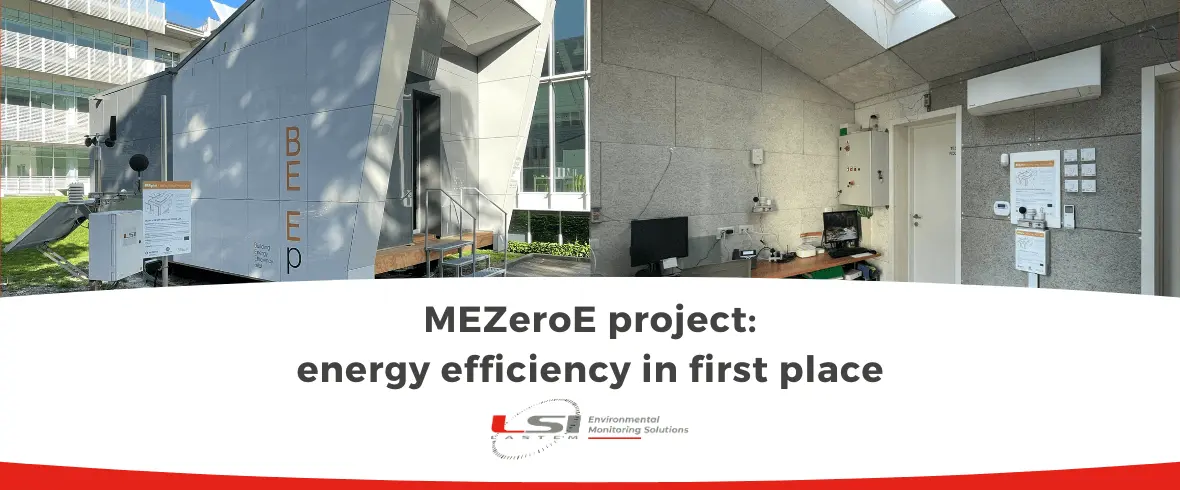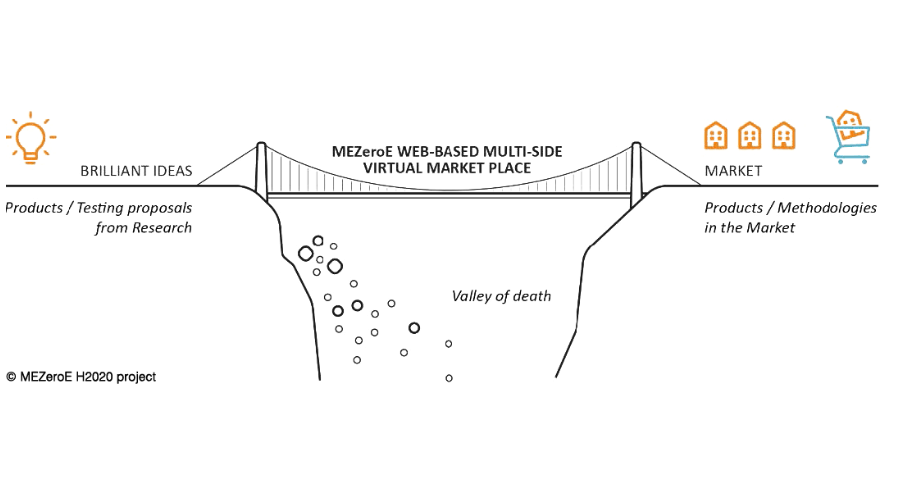To evaluate the performance of building envelopes, the MEZeroE project uses advanced environmental monitoring instruments, such as, among others, LSI LASTEM air flow, temperature and humidity sensors. The systems used are plug and play, easy to install and cloud-based, allowing for accurate and continuous monitoring of both internal and external environmental conditions. The BEEpilot is also equipped with a weather station for correlating internal environmental data with those acquired outdoors. Thanks to this data, the researchers can evaluate the effectiveness of the tested solutions and continuously improve the energy efficiency of the mini pilot building. An important aim, among others, is to convey the collected data to a shared platform to be made available and analysed.
MEZeroE project: energy efficiency in first place in construction

Energy efficiency is a highly relevant topic in building design and construction. Not only it helps to significantly reduce global emissions and energy consumption, but it must go hand in hand with the well-being of the building’s indoor environment.
In this context, MEZeroE was born, a research project funded by the European Commission under the H2020 program, related to the call “NMBP-05-2020 – Open Innovation Test Beds for functional materials for building envelopes”, whose main objective is to promote innovation and standardisation in the construction sector, in order to contribute substantially to the transformation of the European building heritage.
An overview of the building envelope
The building envelope is made up of systems such as the roof, the facade (including walls, windows and doors) and the underground waterproofing elements (those that are below ground level). In summary, it is that set of elements which delimit the perimeter of a building.
Into the heart of the project
One of the central elements of the project is the BEEpilot (Building Energy Efficiency pilot), a pilot building with envelopes built with dry multi-layer technology, located on the Lecco Campus of the Milan Polytechnic. This laboratory represents the heart of the project, an environment in which analyses are conducted and the environmental data collected are studied to evaluate the performance of the building envelopes and identify any improvements.
Researchers analyse energy expenditure and identify the most suitable materials for thermal insulation. Wood was used as the main material for the casing, in order to evaluate the durability and effectiveness of this material, an important theme in the research project.
The BEEPilot pilot building features an innovative architecture, with the ability to rotate 270°, remove vertical closures and even the roof. This is a key feature to study the impact of solar exposure on the building, as orientation and exposure play an important role in energy efficiency.
Furthermore, there are two test rooms in which the temperature and humidity levels are constantly monitored and the effects on the energy flows are studied.
The main objective of the project is to support and promote innovation and standardization in the building sector, contributing to the transformation of the EU’s building stock.
Active project partners
The MEZeroE consortium represents a large portion of the European continent, and the numerous partners involved in the project can be grouped into four categories:
- Research and Technological Development (RTD), which includes research centres, universities, and laboratories, with important infrastructures and an excellent knowledge of the market and of the needs for performance analysis and certification (EURAC Research – project coordinator, Politecnico di Milano, Acondicionamiento Tarrasense Associacion, Universitaet Innsbruck, Zavod Za Gradbenistvo Slovenije, Politechnika Krakowska, Institut de Tecnologia de la Construccion de Catalunya, Danmarks Tekniske Universitet, Fundacion TECNALIA Research & Innovation);
- Industry (IND), which includes small, medium and large companies (FOCCHI SpA, VELUX AS, WINDOWMASTER International A/S, FLEXBRICK SL, HELIATEK GMBH, Tecnologia Navarra de Nanoproductos SL, FLEXANDROBUST Systems Spolka Z Ograniczona Odpowiedzialnoscia, ROTHO BLAAS SRL, RIKO Hise Proizvodnja In Trzenje D.O.O., INDRESMAT SL);
- Measurement and Verification (M&V), with three additional very dynamic small/medium enterprises, able to share a common data platform with a single application programming interface as an access point (ARBNCO LTD, NUVAP SpA, GREENTEG AG);
- Business (BIZ), which includes small and medium-sized enterprises capable of developing and enhancing the open innovation platform promoted by MEZeroE (INCURVO SL, Association COMPAZ, R2M Solution SRL).

Systems useful to the project
MEZeroE: a turning point in the design of building envelopes
The MEZeroE project, now in its second year of activity, aims to promote innovation and energy efficiency in the building envelope sector, creating an open and collaborative research ecosystem. Thanks to the use of advanced tools, innovative technologies and the participation of industrial partners, MEZeroE allows the study and performance verification of materials and/or innovative technological solutions for the envelope of almost zero energy buildings.

